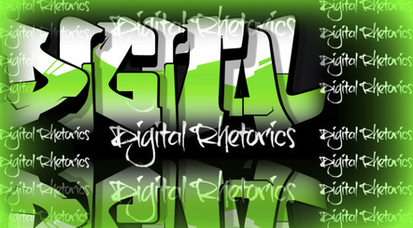Start Here
Your task is to arrive at some definitions of rhetoric that are useful for YOU. The more that you can make these concepts your own, the more you will understand rhetoric. Once we understand rhetoric, then we can see that digital cultures are inherently rhetorical spaces/places. Do the best you can here, especially if rhetorical theory is new for you. You are not being asked to become an expert YET (do trust that you are moving in that direction); just try and wrap your head and writing around these ideas.
The list of readings below organizes the issues that we will discuss in the course. Some of the topics are academic discussions that relate explicitly to rhetoric and digital rhetoric. Other topics are related to current, social issues that you should know and understand in order to contextualize digital rhetorics. For instance, court rulings that favor big communications companies like Verizon offer a political context for discussing digital cultures and rhetorics within the confines of corporate-controlled networks. How are people arguing for and against such a digital world? How do rhetorics of net neutrality work?
Please note that all of the reading materials in this list are open access. There is no password, fee, or restriction imposed to limit who can see, read, and hear these rhetors. Please keep that in mind when deciding who and what to embed on your website. All of the bold, red words indicate weblinks.
The list of readings below organizes the issues that we will discuss in the course. Some of the topics are academic discussions that relate explicitly to rhetoric and digital rhetoric. Other topics are related to current, social issues that you should know and understand in order to contextualize digital rhetorics. For instance, court rulings that favor big communications companies like Verizon offer a political context for discussing digital cultures and rhetorics within the confines of corporate-controlled networks. How are people arguing for and against such a digital world? How do rhetorics of net neutrality work?
Please note that all of the reading materials in this list are open access. There is no password, fee, or restriction imposed to limit who can see, read, and hear these rhetors. Please keep that in mind when deciding who and what to embed on your website. All of the bold, red words indicate weblinks.
|
Excerpts of Film about Aaron Swartz Please watch the three videos below that will introduce you to Swartz and also what's at stake in terms of knowledge, power, and access in a digital world.
|
|
______________________________________________________________________
"Using the Rhetorical Triangle and Rhetorical Appeals" This is an 8-minute video that describes and defines our study of rhetoric this semester. What is Rhetoric? by Silva Rhetoricae
This is a website that works two ways: 1) it tries to take on the complexities on rhetoric study; 2) it seeks to define the basics of rhetoric. Follow the links to the definitions of rhetoric and spend some times at other pages on the site. "What is Rhetoric?" @ Digital Writing 101
This is a website that also seeks to define the basics of rhetoric. Follow the links to the definition of rhetoric and spend some times at other pages on the site. |
|
______________________________________________________________________
"The Art and Science of Influential Web Content: What Rhetoric Really Is" by Colleen Jones Jones discusses web content from the vantage point of rhetoric theory using four, central principles: 1) the persuasive appeals, 2) identification, 3) strategic repetition, and 4) kairos. Please make sure that you flip though all six of the webpages. "Guiding Users with Persuasive Design: An Interview with Andrew Chak" by Christine Perfetti This interview pushes us to see successful website design as more than just the ease of finding information and navigating links. Successful websites also PERSUADE! This purpose of persuasion is what marks digital space as rhetorical. "The Web as a Rhetorical Place" by Nicholas C. Burbules (from Silicon Literacies edited by Ilana Snyder, 2002) Pay close attention to section three where Burbules calls the Web a rhetorical place rather than a rhetorical space. Burbules defines a place as "a socially or subjectively meaningful space... It has an objective, locational dimension: people can look for a place, find it, move within it. But it also has a semantic dimension: it means something important to a person or a group of people, and this latter dimension may or may not be communicable to others." We will consider these ideas in how we discuss digital rhetorics. "Web Style Guide: Rhetoric and Web Design" by Patrick Lynch and Sarah Horton The authors review the basics of the persuasive appeals--- ethos, logos, and pathos--- and their applications to web design. |

Digital Rhet Graf by Carmen Kynard is licensed under a Creative Commons Attribution 4.0 International License.


